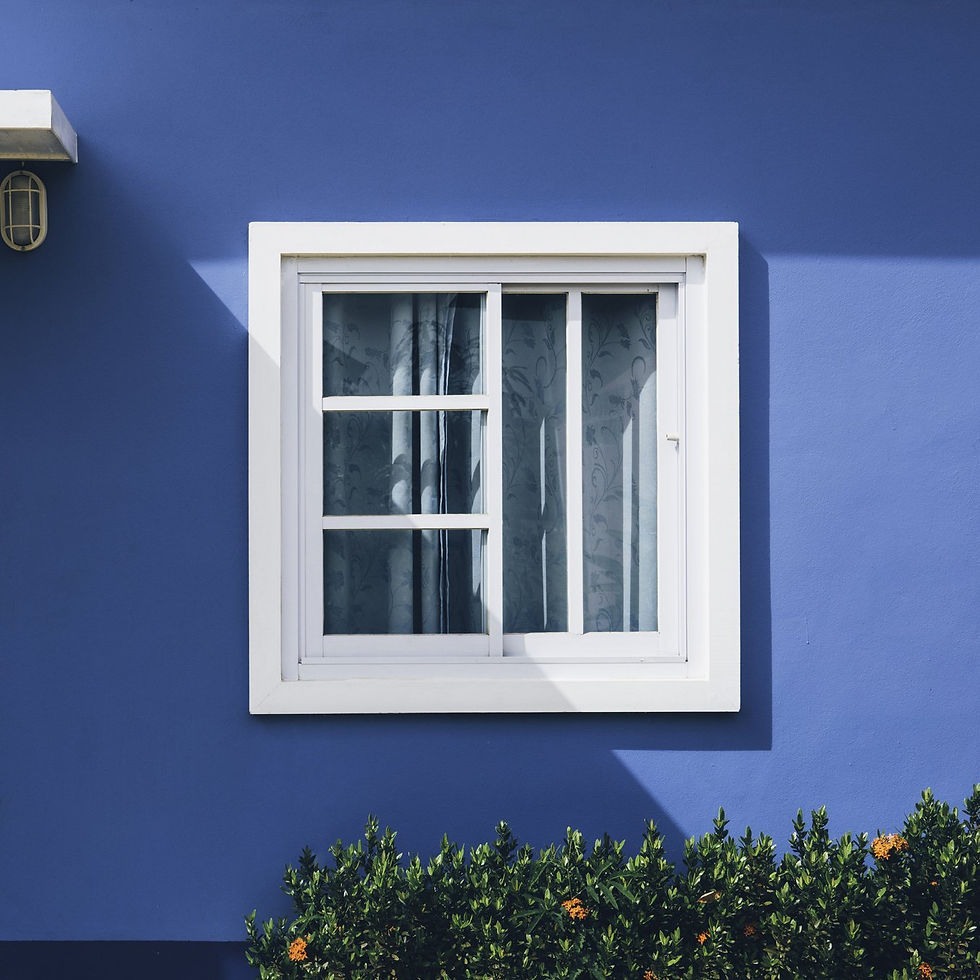Windows & Doors: More Than Decor
- Jessica Foster

- Jul 27, 2020
- 3 min read
Windows and doors on a home are more than just the means of entry, airflow, and sunlight. Like exterior walls, windows and doors are subjected to various requirements in order to contribute to the safety and energy efficiency of a home. Much like how wall sheathing is designed to withstand certain environmental forces, windows and doors need to withstand all of those forces and some. What this entails varies depending on region, such as areas that are hurricane-prone called windborne debris regions. The International Residential Code has different guidelines depending on if the area is hurricane-prone, as windows must be able to withstand wind loads as well as debris picked up by the wind. For non-hurricane-prone areas, the IRC has guidelines for wind loads windows/doors must be able to withstand depending on geographical zone. Windows and doors need to meet these minimum standards and can not only be destroyed, but will also subject the inhabitants to safety concerns, especially with debris-borne debris. The IRC sets qualifications based on region and other geographical determinants for max wind speed certain areas can expect, and windows/doors are rated in reference to this.
Aside from protection, exterior doors and windows also need to meet certain energy efficiency standards. An energy efficient window/door is one designed in a way to prevent the loss/gain of cold/warm air that can occur when a hole is made in the envelope of a building. The higher the energy efficiency the lower the energy usage in a building; ultimately lower energy bills and happier inhabitants. The rate of heat loss in regards to window and door assemblies is called the U-factor or U-value. The lower the u-factor the greater resistance to heat flow and the better its insulating properties. The National Fenestration Rating Council (NFRC) rates door and window assemblies using this value to note their energy efficiency. Choosing the most energy efficient windows and doors in relation to your area’s climate can make your home more comfortable and help cut energy costs.
Among most topics throughout the IRC, standards are typically set as a baseline for general construction purposes with other regulatory agencies going above and beyond in specific industries. For example, the IRC calls for fenestration--the arrangement of doors/windows on the elevations of a building--to be tested by approved independent agencies and bear a label referring to the manufacturer. As stated before, the IRC lists the minimum standards for windows/doors in relation to certain criteria (such as location and expected wind speeds). Independent agencies and other nationally recognized regulating bodies work to keep different industry’s products and method’s up to date with the latest and greatest standards.
While the design of windows and doors may seem to primarily be about aesthetics, they have these other crucial functions that should be considered during construction. Here at Fine Remodeling, we are your Delaware contractor experienced with the installation of doors and windows to ensure the prosperity of your renovation project. We are dedicated to making sure that your windows and doors meet the standard, they are installed correctly, and you are aware of these characteristics that generally aren’t seen but felt. Call to review your next renovation project with us so you can be sure it’s done right the first time.
Visit our contact us page and see our calendar to select a day/time for a discussion about your project.
E-mail sales@fineremodelingde.com
Call 302-635-0375 to discuss your dream project.
It's our duty to help guide you as best we can.
Invest in your happiness; remodel your home.

#contractor#design#create#smallbusiness#artist#delaware#construction#concrete#renovations#custom#building#tile#paint#tile#floor#flooring#newark#drawing#sketch#carpenter#carpentry#kitchen#bathroom#interiordesign#architecture#home#kitchendesign#interiors#luxury#color







Comments